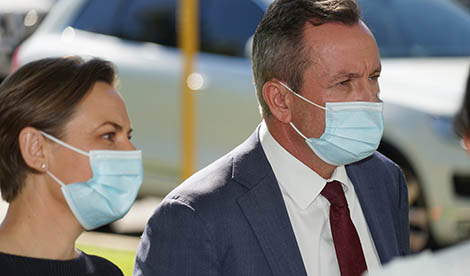

Blog

President’s Blog: Hears to the Government for listening
Friday August 12, 2022
COVID-19 processes will be scaled back at WA public hospitals from Monday.
Under the System Alert and Response (SAR) framework, a new Blue alert level will begin on 15 August, scaling down from the current Red level.
The measures, at each hospital, according to the government media release, include:
- Visiting hours will be extended at each hospital. Essential visitors may visit outside standard hours;
- Two visitors per patient at any one time, but this may be extended in certain circumstances, as determined by authorised hospital staff;
- Visitors or carers aged 12 years or older must wear a surgical mask in all areas of the hospital or health service;
- Asymptomatic visitors will no longer have to produce a negative rapid antigen test (RAT) result, unless visiting a high-risk area, or vulnerable patients;
- To ensure patient safety, symptomatic visitors are not permitted. Exceptions may be made on compassionate grounds;
- RATs will still be required for all symptomatic emergency department patients;
- A prior RAT result is required for symptomatic patients being admitted for elective surgery or procedures;
- Staff working in high-risk hospital areas or caring for vulnerable patients must wear Particulate filter respirator (PFR) masks, while all other staff must wear a surgical mask. Further information for staff will be provided by local Health Service Providers; and
- Staff may choose to wear PFR masks in any area of the hospital.
On 6PR on Tuesday, Oliver Peterson asked me whether I thought this was the right time for the scrapping and scaling down of some of these pandemic protocols.
I told Oliver it was a lot better timing than it might have been, as it had actually been delayed by a month based on feedback from frontline doctors.
“It does actually show, to their credit, the McGowan Government is responsible and is actually looking out for the wellbeing of WA hospitals and people,” I said.
I was cautious in my comments about how this would affect the hospital system overall. While it will have some positive effect on the movement of people around the hospital, I was clear that this would “do absolutely nothing to improve ramping”.
Oliver asked whether hospitals were coping at the moment with the surge of patients, whether for COVID, or those turning up in emergency departments, or for a day procedure.
I was clear not to catastrophise the situation, but nevertheless make it clear the feedback I’m constantly receiving about conditions for our medical staff.
“I’ve got to tell you, the junior doctors in our healthcare system have been doing it really hard for a long time,” I said.
“They are tired, they are worn out, they are demoralised, they are burnt out.
“I’m certainly glad that we really didn’t hit the 500-hospitalisation level this time around, but those doctors really need to be applauded for all the hard work that they’re doing. So, in a lot of measures, the hospital system is not coping.”
While previously there was no modelling provided by the Government, the Telethon Kids Institute and Curtin University recently produced modelling predicting WA’s COVID wave has passed, with a third Omicron peak unlikely, and cases forecast to decline to about 3,000 by the end of the month, and continue falling into spring. Great news.
I felt the AMA (WA)’s advocacy had paid off on mask wearing, as we had lobbied for individual healthcare workers to wear what they think is appropriate for the appropriate clinical setting.
“Now, certainly in high-risk areas in emergency departments, where they don’t know what they are actually getting, or high-traffic areas, I think N95 is still very appropriate. If you’ve got a healthcare worker that, for whatever reason, is slightly more vulnerable, then yes, an N95 is more appropriate. The good thing about this protocol is it leaves it up to the healthcare individual to make that decision about whether they wear N95, or whether to wear a surgical mask.”
None of this in any way minimises the seriousness of this pandemic, with wave following wave (and presumably more to come down the track), and deaths, serious illness, ICU presentations, long COVID, and general unrest and social and economic disharmony heightened by the disease.
It’s the reason we have constantly called for adjustments to health settings, particularly the wearing of masks in public settings.
Nevertheless, there is the ongoing need for dialogue, and an acknowledgement when calls appear to be heeded.
As always, when it comes to improvements to the health of Western Australians, the AMA (WA) is all ears.

